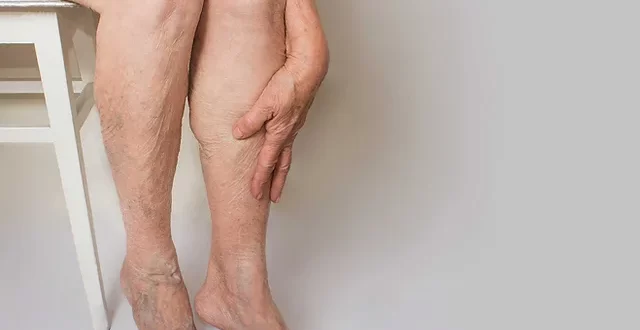Peripheral artery disease is an under-diagnosed, under-treated circulatory disease that is common in aging populations. It slows or blocks the blood flow and usually affects the legs. If left untreated, peripheral artery disease may cause gangrene, sores, or wounds, and can ultimately result in amputation. However, together with risk factor management like lifestyle modifications, diabetes control, hypertension control, heart disease risk factor control, and medication to clear clogged blood vessels, improved circulation may be achieved. There are minimally invasive procedures like angioplasty, minimally invasive sclerotherapy, and minimally invasive varicose vein surgery for patients who are unsuitable for conventional surgery with general anesthesia in some patients with peripheral artery disease.
These procedures are carried out by a trained vascular surgeon in Singapore for certain patients with peripheral artery disease whose blood vessels are along the primary pathway of blood flow to the colon. The procedures improve blood flow, restore muscle strength for walking, and improve the ulcer’s healing action due to peripheral artery disease, reduce pain, and the ability to prevent further tissue loss. This article majorly focuses on peripheral artery disease and provides comprehensive information about the diagnostic image and minimally invasive treatment procedures like angioplasty, minimally invasive sclerotherapy, and minimally invasive surgery for varicose vein at The Vascular and Interventional Center in Singapore.
Overview of Vascular and Interventional Centre
At the Vascular and Interventional Centre, what makes us unique is our level of care and guidance throughout the entire process. We will assist you at every stage of your condition, from the first general diagnosis of what conditions you are suffering from, the ultimate interventional radiological process that will solve your problem, and even after your treatment to ensure that you have understood every aspect of your overall well-being. We will provide you with quality and convenient services to support you in every step of your journey.
Understanding Peripheral Artery Disease
Peripheral arterial disease treatment often includes lifestyle changes, medications, and possibly surgery to improve blood flow to affected limbs. Many patients with PAD do not experience symptoms. For those who do, symptoms may include pain or cramping in the legs when walking (most commonly in the buttock, thigh, or calf), inactivity or rest usually relieves the pain or cramping, the pain in the legs returns when you resume activity. The symptoms of PAD are similar to muscle pain that people invariably experience as they age due to other causes. However, if these symptoms become more pronounced or occur more frequently, particularly during walking, you should be seen by your vascular specialist. With time and in the absence of treatment, PAD can lead to recurrent ulcers of the feet and lower legs requiring amputation of a foot or lower leg. PAD is a chronic condition that raises the risk of heart attacks, stroke, poor circulation, and other health issues. It’s critical to confront PAD and its associated risks head-on.
Peripheral artery disease (PAD) is a narrowing or blocking of the arteries in the head, stomach, arm, and most commonly in the legs. The condition is similar to coronary artery disease (narrowing of the arteries in the heart). Both of these conditions are an equal cause of physical pain and suffering. PAD occurs when excess cholesterol and other fatty deposits in the blood collect in the arteries that supply blood to the arms and legs. This accumulation of fatty materials clogs the arteries, slowing or stopping blood flow to the feet, legs, and toes. Without a proper blood supply, the leg muscles can’t get the blood and oxygen they need to function. This can cause muscle pain, cramping, or weakness. Immediate attention must be given to the treatment of PAD. However, PAD also raises the risk of stroke and heart attack.
Unhealthy arteries and insufficient blood flow to the organs may cause peripheral artery disease. Unhealthy arteries may be caused by smoking, high cholesterol, high blood pressure, or diabetes. Poor circulation or flow of oxygen and nutrients to the limbs may cause cramping, pain, or wounds. It may progress to ulcers, infection, problems with the muscles and bones of the limbs, or even amputation of the limb.
Traditional vs. Minimally Invasive Treatments
Stents are tiny mesh tubes that hold the collapsed artery open. They are often used in conjunction with angioplasty. Stent insertion can be completed in a single session, but stents can also close up or become subconsciously small, requiring medication or a bypass operation. Bypass surgery is more demanding but longer-lasting. It keeps open blood flow for longer until a new arterial occlusion can form.
Angioplasty is the use of a balloon inserted into the artery to squash the plaque and enlarge the artery’s width. Bypass surgery is a procedure that uses a section of another artery or vein to reroute blood flow around a blocked artery. Recovery time is faster for angioplasty because the minuscule incision disrupts fewer muscle tissues. The patient usually can go home the same day and resume regular activities in one of the next days. Bypass surgery usually requires general anesthesia and disrupts other muscle tissues, so recovery time is lengthier both in the hospital and at home.
In comparison to conventional bypass surgery, minimally invasive surgery does not open the body cavity, creating much less trauma. Step-by-step examination of the blood vessel, restoration of normal blood flow, less discomfort during the operation, lower chances of infection, lower procedure recovery speed, and immediate post-surgical checks and early detection of possible complications have resulted in significant benefits for patients. With such significant benefits, minimally invasive procedures provide one of the best treatments for artery obstruction such as atherosclerosis and peripheral arterial disease, which affect a large group of patients with a very high incidence rate.
Minimally invasive treatments have many benefits and are now widely accepted as the first choice in the treatment of artery disease. The results have been nothing short of revolutionary. Administered on an outpatient basis, minimally invasive treatments produce minimal downtime and allow patients to return to activities very quickly. Patients go home on the same day, can walk immediately, and resume their normal activities within a few days. Minimally invasive procedures also result in less pain and bleeding, as well as fewer complications. Finally, the cosmetic benefits are extremely pleasing as there is no scarring involved with a minimally invasive procedure. Peripheral arterial disease Singapore offers advanced medical care and treatment options tailored to patients’ needs, provided by specialized healthcare facilities.
Peripheral Artery Disease Treatment at Vascular and Interventional Centre
Peripheral artery disease treatment aims to manage symptoms and prevent complications through a combination of exercise, medication, and sometimes surgical interventions. The Vascular and Interventional Centre is equipped with cutting-edge diagnostic technology, and our talented medical team offers a wide range of treatment services for peripheral arterial disease. Therapeutic procedures include minimally invasive angioplasty and stenting, providing tissue and preventive endovascular therapy including balloon angioplasty and placement of a stent or atherectomy. The clinic is also associated with vascular surgical facilities when surgical interventions are appropriate for the needs of a patient. At the time of treatment, our professionals tailor each operation to the healthcare needs and life goals of the individual. Recommendations vary according to the degree of the disease, symptoms, and the possibility of the implementation of the plan.
 Posting Point
Posting Point

